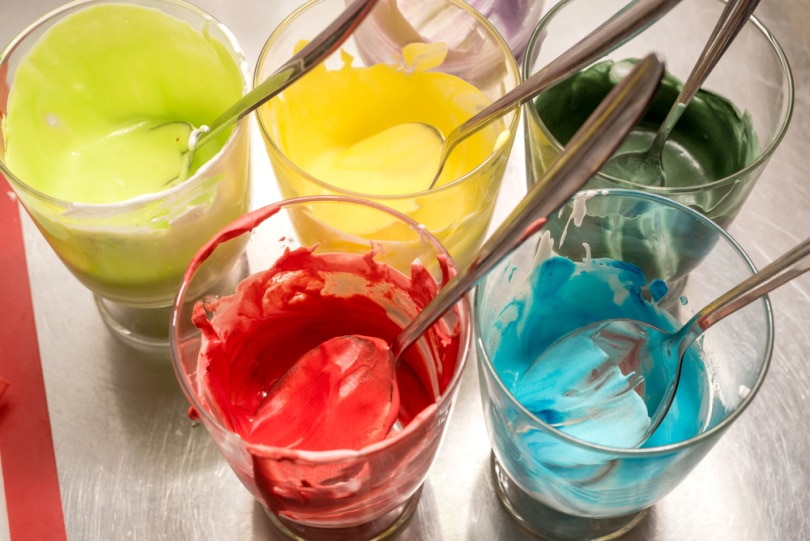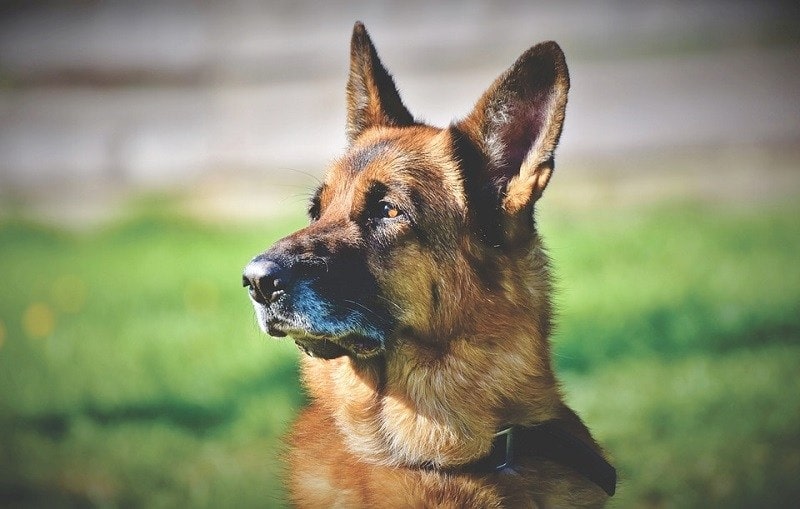How to Groom a Labradoodle (6 Expert Tips)

Updated on
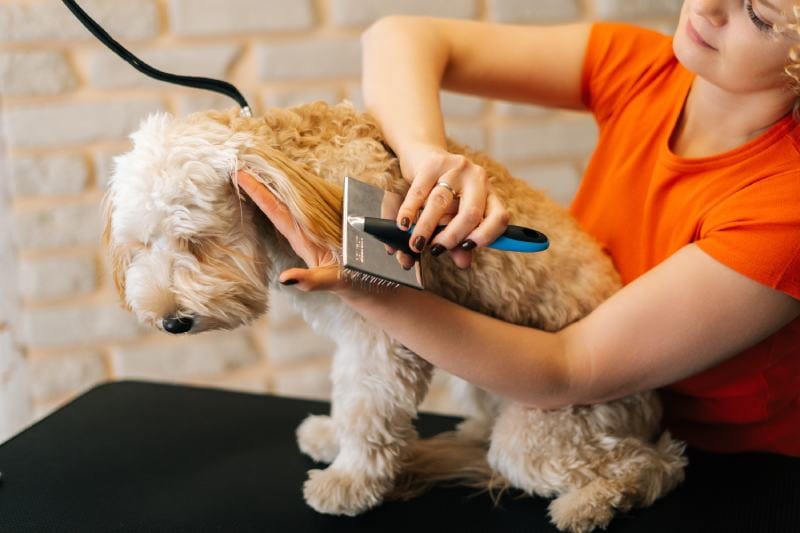
Labradoodles are popular for their friendly personalities and low-shedding coats, which makes them a great choice for allergy sufferers. However, their coats require regular grooming to keep them healthy and free of mats. Here are six expert tips on how to groom a Labradoodle:
The 6 Tips on How to Groom a Labradoodle
1. Brush Your Labradoodle’s Coat Regularly
Brushing your Labradoodle’s coat regularly is essential for preventing mats and tangles. Use a slicker brush or a comb with wide teeth to brush through the coat thoroughly. Start at the base of the coat and work your way up, being careful not to pull too hard on any knots or tangles.
Brush your Labradoodle’s coat at least once a week, but more often if your dog has long hair. Doing so can help reduce allergies in your home while also keeping your pup looking and feeling fine.
2. Trim Your Labradoodle’s Coat as Needed
Trimming your Labradoodle’s coat is also necessary to prevent mats and tangles. You can use clippers or scissors to trim the coat to a length that suits your dog’s style and personality.
However, be careful not to cut the coat too short, as it can expose the skin to the sun and cause sunburn. You can also consider taking your Labradoodle to a professional groomer for a trim. Some dogs are just too much for their owners to handle, so this task is best left in the capable hands of the pro.

3. Clean Your Labradoodle’s Ears Regularly
To keep your Labradoodle in the best of health, proper ear hygiene is key. Utilize a cotton ball or soft cloth saturated with an ear-cleaning solution to tenderly cleanse inside their ears and help prevent any potential infections from occurring.
Do not use Q-tips or other objects that can damage the ear canal. Also, be sure to keep an eye out for ear infections (swelling, redness, a foul odor). Consult your veterinarian right away at the first sign of concern.
4. Bathe Your Labradoodle Only as Needed
Bathing your Labradoodle is necessary to keep them clean and smelling fresh. However, avoid bathing your dog too often, as it can dry out its skin and coat. Use a mild shampoo specifically designed for dogs and rinse thoroughly to avoid any residue. You can also consider using a conditioner to help detangle the coat and leave it silky smooth.

5. Trim Your Labradoodle’s Nails
Trimming your pet’s nails regularly is needed to prevent overgrowth and discomfort. Use a pair of dog nail clippers and trim the tip of each nail, being careful to avoid cutting too close to the quick.
If you’re not comfortable doing this yourself, you can take your Labradoodle to a professional groomer or veterinarian. This is the safest way to make sure your ‘doodle is getting the care it needs while avoiding accidental harm on your part.
6. Don’t Forget Your Labradoodle’s Teeth
Brushing your Labradoodle’s teeth regularly is necessary to prevent dental problems such as gum disease and tooth decay. Use a dog toothbrush and toothpaste to brush your dog’s teeth at least once a week.
Start by introducing your dog to the toothbrush and toothpaste gradually and reward them with treats to make the experience positive.
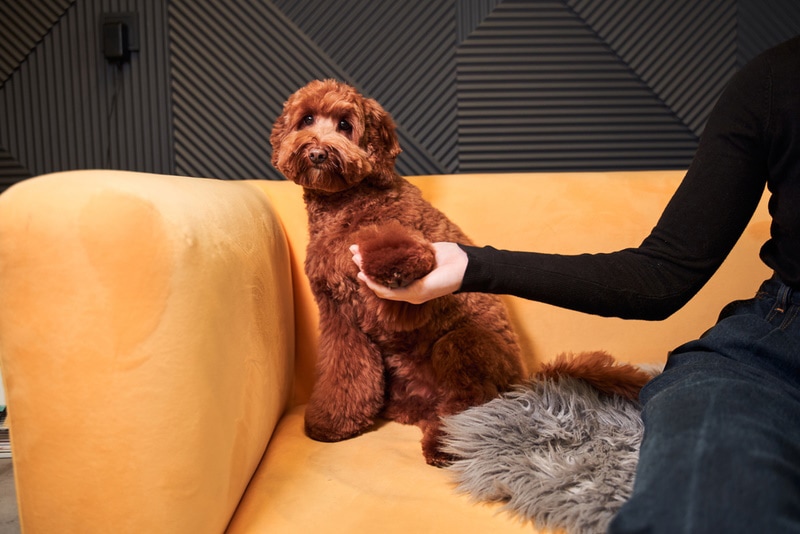
How to Give Your Labradoodle the Best Care
Now that you know how to properly groom your Labradoodle, it’s time to learn about the other aspects of their care. To keep your furry friend healthy and happy, here are a few tips that you should follow:
Exercise
Just like us humans, Labradoodles need regular exercise to stay fit and active! Take them out on walks around the block or to the local park for some playtime. If you are unable to take them out, make sure to provide plenty of toys and interactive games that your pup can enjoy indoors.
Nutrition
A balanced diet is essential for any pup’s health. Consult with your vet about the best food for your Labradoodle’s age, size, and activity level. Additionally, make sure to limit their treats and snacks to avoid any dietary issues.
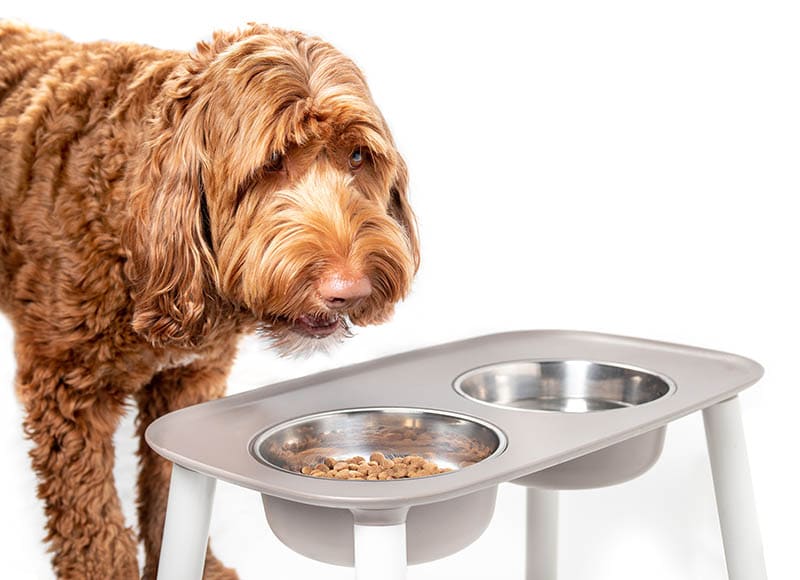
Grooming
As mentioned before, grooming is an incredibly important aspect of your Labradoodle’s care. Make sure to brush them regularly and keep up with their nail trims and baths.
There's nothing quite like a happy, clean pet. But you'll need a great shampoo to make that happen. Our Hepper Cucumber & Aloe Dry Shampoo is easy to use and gentle on your pet's skin. Plus, you'll love the fresh, clean scent and pH-balanced, pet-safe formula!
- Simply Brush - Waterless cat shampoo / dog shampoo means no rinsing required. Forget the bath!...
- No Soap - This fresh-smelling dry shampoo for dogs and cats is free from soaps, glutens, dyes, DEA,...
Veterinary Care
Lastly, it is important to take your Labradoodle for regular check-ups with a vet. This will help you stay on top of any health issues and give your pup the best possible care.
By following these tips, you can make sure your Labradoodle is happy and healthy for years to come! So show them some extra love today and get started on the path to a more enjoyable life with your furry friend.
Conclusion
Grooming your Labradoodle is an important part of pet ownership. With the right supplies and techniques, you can make sure your pup is looking and feeling its best.
Don’t forget to provide your ‘doodle with lots of love and attention, and make sure to follow the tips above for proper nutrition, exercise, grooming, and vet care. By doing so, you will ensure that your pup has a long and happy life by your side!
Featured Image Credit: Dikushin Dmitry, Shutterstock




